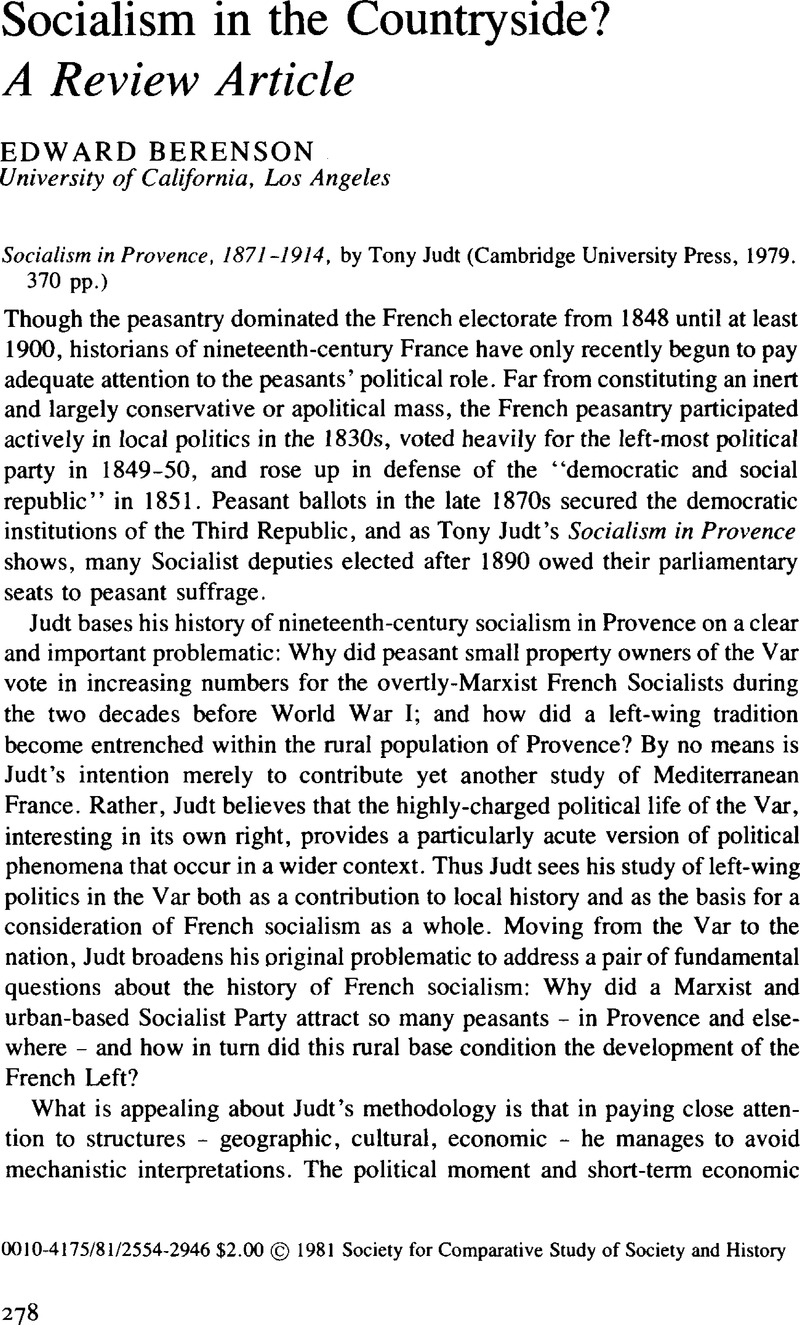No CrossRef data available.
Article contents
Socialism in the Countryside? A Review Article
Published online by Cambridge University Press: 03 June 2009
Abstract

- Type
- The Politics of Protest in Rural Communities
- Information
- Copyright
- Copyright © Society for the Comparative Study of Society and History 1981
References
1 Peasants into Frenchmen: The Modernization of Rural France, 1870–1914 (Stanford, 1977)Google Scholar. Weber argues that the construction of secondary roads and railways in the 1870s and '80s made possible a rapid and sweeping “modernization” of the countryside, still isolated and tradition-bound in 1870. By 1900, rural France had been fully integrated into a modern French nation-state dominated by the cities.
2 On page 108 Judt says there were 16 socialist communes in Brignoles in 1902–14, but on page 117 he says there were 21. On the table that summarizes his electoral data (pp. 102–7) I can only find 15! Judt's context indicates that the true number was 16.
3 Judt calls a commune socialist in the late century when its vote for the socialist candidate simply exceeds the departmental average of about 30 percent. But in 1849, when the departmental average for the democ-soc candidates was similar (27.4 percent), a commune had to favor the Extreme-Left with 40 percent of its electorate for Judt to label it democ-soc.
4 The eight communes are Ponteves, Seillon, Besse, Camps, Cotignac, Entrecasteaux, St. Julien, and Vinon. Election data for 1850 from Agulhon, M., La République au village (Paris, 1970), p. 290Google Scholar. The differences between the elections of May 1849 and March 1850 are minimal.
5 La Voix du peuple (Marseille, 04 11–12, 1849).Google Scholar
6 Judt, , p. 231Google Scholar. See for example La Voix du peuple, June 4, 1849.Google Scholar
7 Margadant, Ted. French Peasants in Revolt. The Insurrection of 1851 (Princeton, 1979), esp. chapters 2–4Google Scholar. Agulhon, Maurice, “La Résistence au Coup d'Etat en Province,” Revue d'histoire moderne et contemporaine, 1974: 18–26.Google Scholar
8 Dermau-Boniol, Simone, “Le Socialisme dans l'Allier, 1848–1914,” Cahiers d'histoire, 1957: 115–61.Google Scholar
9 On the question of cultural intermediaries, see the proceedings of the conference on “Les Intermédiaires culturels” held at Aix-en-Provence, June 16-18, 1978 under the direction of Michel Vovelle. See also Darnton, Robert, “The High Enlightenment and the Low-life of Literature in pre-Revolutionary France,” Past & Present, No. 51 (1971): 81–115. Both Vovelle and Darnton have made important contributions to an understanding of the ways in which pivotal institutions and individuals - often of ambiguous social status - forged links between the ideas and culture of the elite and those of the popular classes.CrossRefGoogle Scholar




